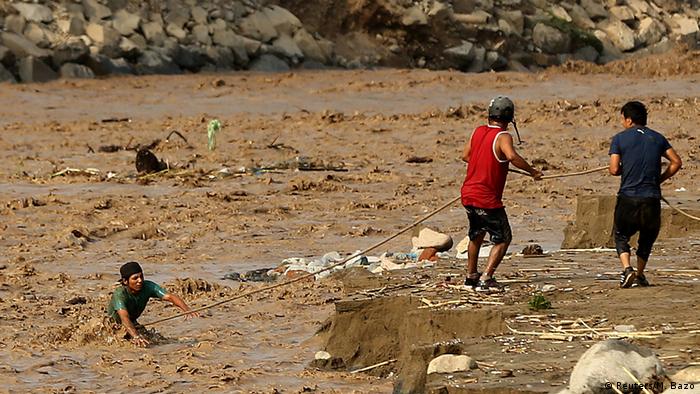DW - Massive Peruvian Floods In Line W. Climate Models, But "Coastal El Nino" Something New
Last edited Wed Mar 22, 2017, 08:51 AM - Edit history (1)
 DW: What is causing the extremely heavy rainfall in Peru?
DW: What is causing the extremely heavy rainfall in Peru?
Mojib Latif: Extremely warm water off Peru. It could be regarded as a kind of coastal el Nino event. El Ninos are events that are characterized by enormously high sea surface temperatures.
So what is the difference between a coastal El Nino and an ordinary El Nino?
Ordinary El Ninos basically cover most of the tropical Pacific and have global impacts. Coastal El Ninos have regional impacts and are restricted to the coast.
So are we just talking about a natural development here?
We don't really know whether this is natural. It is unusual that after a big El Nino - and the last one was in 2015/2016 - that there is another El Nino happening. We have to see now whether this develops into a full-blown El Nino, which then would also have global impacts. But once again it's unusual that we have flooding in Peru, again, within two years.
Some experts have been saying the last similar event was nearly a century ago in 1925?
Yes. Data is limited, but we can't exclude that. It's not unprecedented but the point here is that normally El Ninos develop at a different time of year. They are called El Ninos because, if we translate this into English, it means the Christmas child. Now we are seeing an El Nino developing in March. Sea temperatures off the coast of Peru are slowly warming. So the question is whether or not global impacts are having an influence here on the climate of South America. What we can say is that El Ninos have become more frequent and also stronger in recent decades. Whether this is already a trend or not is hard to say but some climate models actually project that this is exactly what's going to happen in response to climate change.
EDIT
http://www.dw.com/en/peru-floods-in-line-with-climate-change-models-says-climatologist-mojib-latif/a-38045642
